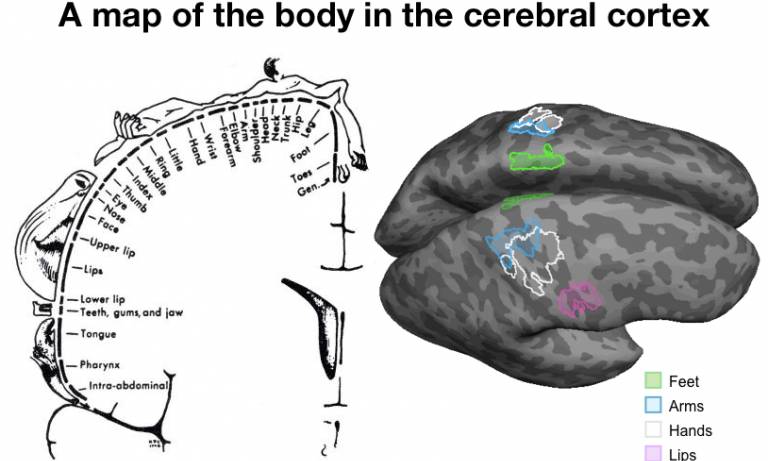Sensory and motor brain plasticity is not limited by location
22 November 2019
A new UCL study provides insight into how the brain alters its body map in adults born without one hand.

According to the study published in JNeurosci, a new function of unused cortical regions is not necessarily determined by the function of nearby cortical regions, in adults born without one hand.
Sensory and motor functions for each body part are represented in multiple “body maps” across the brain. Following arm-amputation, brain areas that previously operated the hand will become freed-up and could potentially be “recruited” to work for other body parts, thus changing the brain’s body maps.
Previous research on such “remapping” in the cerebral cortex has suggested that the unused hand region in the cortex may only process information from body parts that neighbour the hand on the cortical body map.
Using functional magnetic resonance imaging, Dr Avital Hahamy (UCL Wellcome Centre for Human Neuroimaging) and Professor Tamar Makin (UCL Institute of Cognitive Neuroscience) measured the brain activity of adults born without one hand when they moved their arms, feet, lips, and intact hand.
“Across the brain, movements of the same body parts (lips, feet, arm) activated the unused hand regions, even if these body parts do not neighbour the hand on the different body-maps. This means that relative location is not the only factor that determines brain remapping,” said Dr Hahamy.
In light of this new knowledge, the research team thinks that the remapping observed in the cerebral cortex may reflect a process that takes place in the basal ganglia, where the body map is condense, and therefore the hand region has many immediate neighbors. Additionally, the body parts that the participants use to compensate for the missing hand in everyday life might influence the remapping.
Dr Hahamy said: “If we have a better understanding of how the resources of the unused hand region are redistributed between different body parts, and where in the brain this occurs, then perhaps we could harness this understanding to enable better control over artificial body parts, such as a prosthetic arm.”
She said research testing their main hypotheses regarding the underlying sources of remapping in the brain would provide further insight.
Links
- Article published in JNeurosci
- Dr Avital Hahamy
- UCL Wellcome Centre for Human Neuroimaging
- Professor Tamar Makin
- Institute of Cognitive Neuroscience, UCL
 Close
Close

